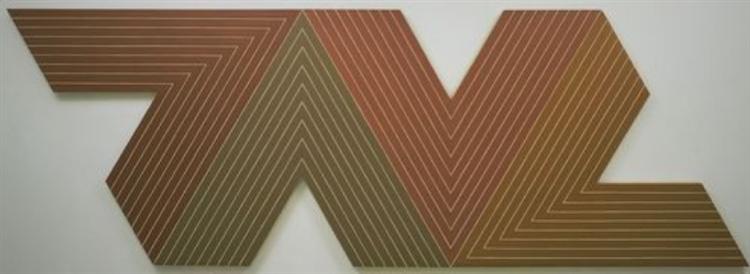Frank Stella

Frank Stella (b. 1936) was trained in art during the heyday of the New York school of Abstract Expressionism, but he paints with a new vision of color and form. His early somber, largely monochrome pictures were indebted to the reductive art of Ad Reinhardt and departed from the traditional square, rectangle, or circle. They are fitted into triangular, star-shaped, zigzag and open rectangular frames – for example, in his Empress of India of 1965. By varying the shape of the canvas, Stella focused on presenting a picture as an object-in-itself. Within the picture, he painted stripes of flat color, separated from each other and bordered by a precise edge. This technique is sometimes referred to as Hard Edge painting.[1]
- Laurie Schneider Adams, Art Across Time, vol. 2, 4th ed., (New York: McGraw-Hill, 2011), 905. ↵

